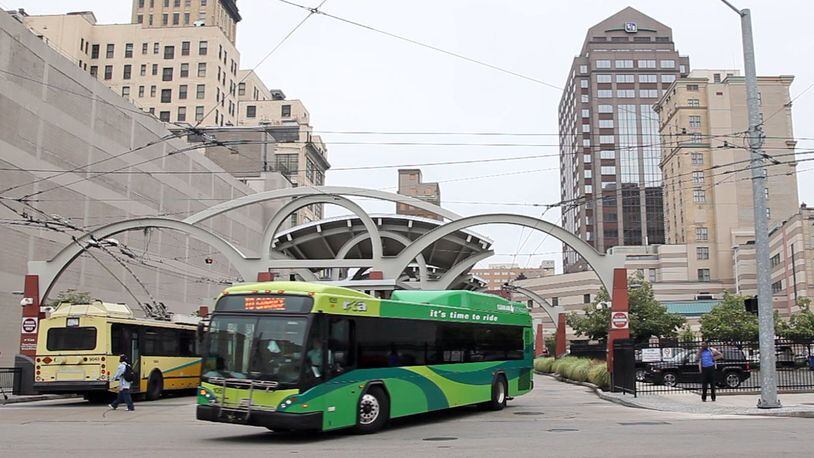RTA officials say the changes are needed to partially absorb a $4.6 million loss of sales tax revenue no longer received from Medicaid managed care, according to the agency. The loss represented more than 6 percent of RTA’s revenue.
RELATED: Montgomery County faces $9M revenue loss
“Quite honestly, I’m worried,” RTA CEO Mark Donaghy, told the committee. “It’s not a wing and a prayer, but we’re going to be watching our financial position closely.”
Riders would see the changes go into effect Feb. 18 if approved by the full RTA board at a Jan. 2 meeting.
The proposal to eliminate $1.50 tokens and raise single-boarding cash fares from $1.75 to $2 worries some who work with Dayton’s most vulnerable populations who rely on bus service to get to jobs, medical appointments or just be with their family in a homeless shelter.
“The changes concern us greatly,” said Kristina Heaton, director of development St. Vincent DaPaul Dayton, which shelters about 400 children, women and men each night.
“We work with a population that 90 percent of these folks don’t have their own transportation, so they are using the RTA services in their daily lives,” she said. “We typically use the tokens, and it’s just a convenience for us.”
MORE: It’s the largest bus contract in RTA’s history: Here’s what you need to know
The route changes don’t alarm Heaton as much as the price increases.
“The tokens we are able to give out on an as-needed basis,” Heaton said. “We might have somebody that just needs a ride to or from somewhere and they don’t need a day pass.”
While the cost of per-boarding fares goes up, the price of a day pass drops from $5 to $4 under the new RTA proposal.
Jessica Olson, RTA spokeswoman, said with the elimination of a 25-cent transfer charge and the lower-priced day pass, riders would be impacted minimally by the new structure.
“It requires you to think a little different,” said Olson.
I-Team: How does RTA driver, CEO pay compare across Ohio
The RTA will also work with the public and the social service organizations served by the system before the plan is put in place, she said.
The fare changes alone are expected to generate about $275,000 a year, according to the RTA. The service reductions are factored to save about another $2 million.
The savings will come from eliminating bus service to Wright-Patterson Air Force Base, Brookville and its Payless Shoesource Eastern Distribution Center, and the only service to New Lebanon. Route 61 to the Dayton Mall also faces elimination, but the area would continue to be served by other buses.
RTA Connect, an on-demand service, will be available for those eliminated routes, but a person would have to call in advance to get a ride to and from a transfer station.
MORE: RTA to allow guns on buses
Together, the route eliminations and fare increase still won’t make up the $4.6 million shortfall. Other areas of the budget are being tightened, including what the transit agency spends on parts, Olson said.
“Through some other conservation efforts, we are able to make up that gap,” she said.
Two routes initially considered for elimination, 19 and 24 with service to Children’s Medical Center, were preserved with minor changes due to the abundance of public comments on the proposed changes.
Another unknown for 2018 includes whether the system will see drivers and mechanics strike again. Greater Dayton RTA drivers and mechanics voted last week to send a strike notice to the regional transit authority as the parties renegotiate the health care portion of a contract signed in January after a four-day strike.
RELATED: Greater Dayton RTA driver union days away from another strike
RTA buses make about 9 million trips a year to about 3,300 stops on 35 routes throughout Montgomery County and parts of Greene County.
About the Author
